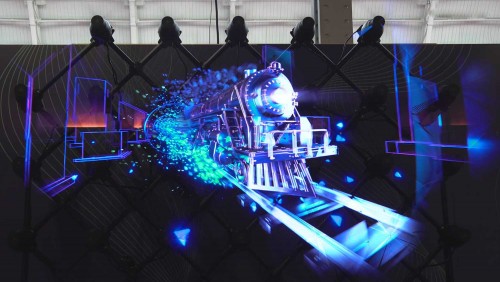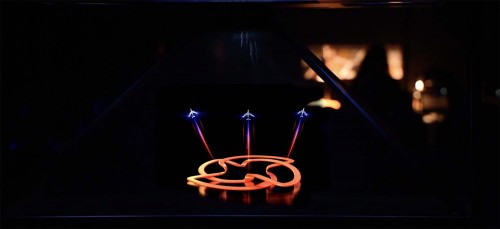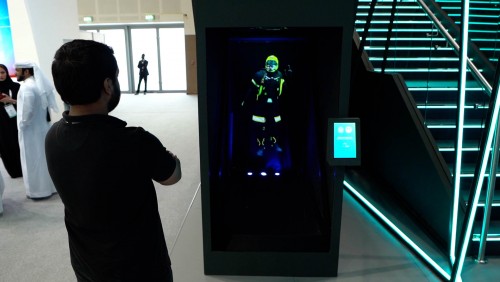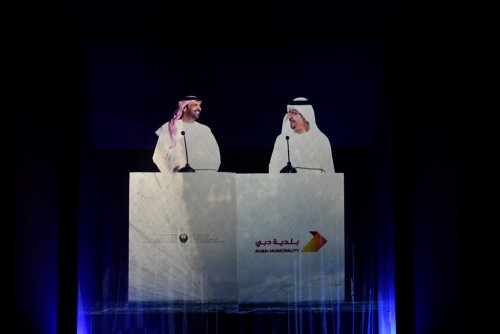The Incredible Rise of Holograms in Retail - Here's How It's Impacting the Industry

The Rise of Holograms
Holograms are a highly effective way for companies to generate buzz about their products. They can effectively create the illusion that a product is much larger or smaller than it actually is. Holograms can also be used to display information regarding a product that is otherwise difficult to display. For example, a hologram of a shirt could show a specific design, while a shirt without a hologram could simply show a general color and style.
Holograms are especially useful in industries that rely heavily on visual cues, such as retail. By using holograms, retailers can highlight specific products or even create a whole new, immersive experience that brings a product to life. For example, a music retailer could create a holographic experience that lets customers “touch” the musician as they browse his or her merchandise.
How does Holographic Technology Work?
Holograms are created by recording laser beams and reflecting them on a special surface. Because the laser is reflected multiple times, the light becomes increasingly distorted. When the light hits a camera, it becomes a perfectly clear image. To create the illusion of details like words or images, the surface of the hologram is treated with a special coating that reflects this light back. This process allows the hologram to create an image with no set size or shape.
There are several different ways to use holographic technology. The most common way is to use holographic images on packaging or a point-of-sale (POS) display. In this case, retailers can create holograms that highlight a specific product. They can also use holographic images as a way to enhance the feel of a shopping experience. Customers may be able to “touch” holograms during a browsing experience, or they might be able to walk around a hologram during the checkout process.
Holographic Printing for Retail
In the past few years, holographic printing has seen a significant increase in popularity. This printing method offers a number of advantages for retailers, including the ability to create high-quality holograms at affordable prices. At the same time, it also provides an opportunity for brands to stand out from the competition. You may have noticed new hologram technology on store shelves or online. These holograms are designed to create a realistic experience, giving customers an insight into the product they’re purchasing.
To create holographic images for retail, merchants can use either digital or silkscreen printing. Digital printing is affordable and available in a wide range of printing technologies. Meanwhile, silkscreen printing is highly effective, but it’s considerably more expensive. As you may have noticed, more and more retailers are turning to holograms. They offer a number of advantages. For instance, they can make products more accessible to customers with accessibility needs. They can also enhance customer engagement, making it seem as if customers are really interacting with the product they’re interested in.
Holographic Label Printing for Packaging
Label printing technology is also seeing a significant increase in popularity. Offered by most printing companies, holographic label printing is a cost-effective way to print high-quality images on packaging. This may include product images, nutritional information, or other relevant information. As a result, the package can be even more appealing to customers, allowing them to make purchases much faster.
Holographic label printing may seem like a simple solution, but it has a number of advantages. First, it can make your products stand out on the shelf. Second, it can make your products easier to access, increasing customer satisfaction. And finally, it can increase brand visibility and product recognition.
Using Holograms for Marketing and Advertising
Holograms can also be used for marketing and advertising efforts. In recent years, retailers have started to create holographic marketing campaigns that are designed to promote a product or a brand. For example, an advertiser may create a hologram that promotes their product. The hologram could be placed on the shelf or in a store window.
This hologram could also be used for marketing efforts, with the hologram designed to capture the attention of passersby. This could include ads that promote a sale or a new product. In this way, the hologram allows retailers to promote their products in a highly effective way.
Final Words: Is Your Business Ready for Holograms?
As technology continues to advance, so does the way people interact with it. From holograms to augmented reality, the retail industry is no exception. Retailers that want to remain competitive will have to adapt to these changes and incorporate holograms into their strategies.
The best way to do this is to conduct extensive market research. Once you know what products you want to highlight, you can use this data to find the best way to highlight them. With holograms, retailers have a unique opportunity to stand out from the competition. They can create holograms that highlight specific products or use holograms as a way to enhance the shopping experience.
Since holograms offer such a unique way to engage with customers, it’s essential for retailers to understand how best to use them.







 Call
Call
 Mail
Mail